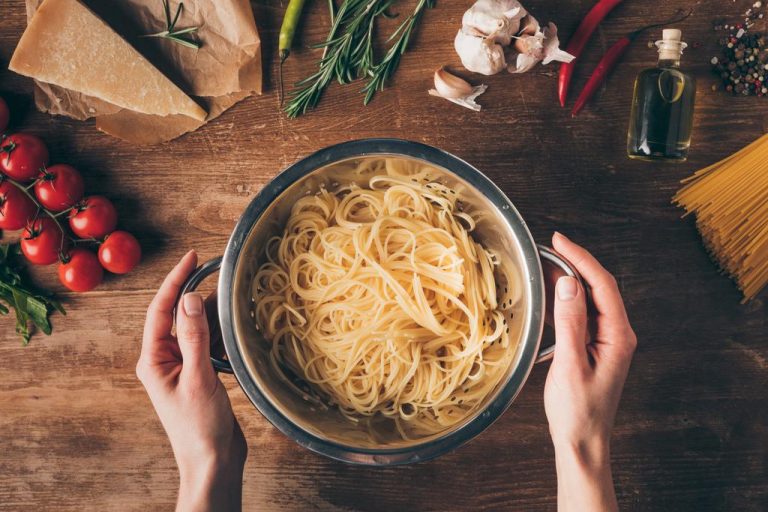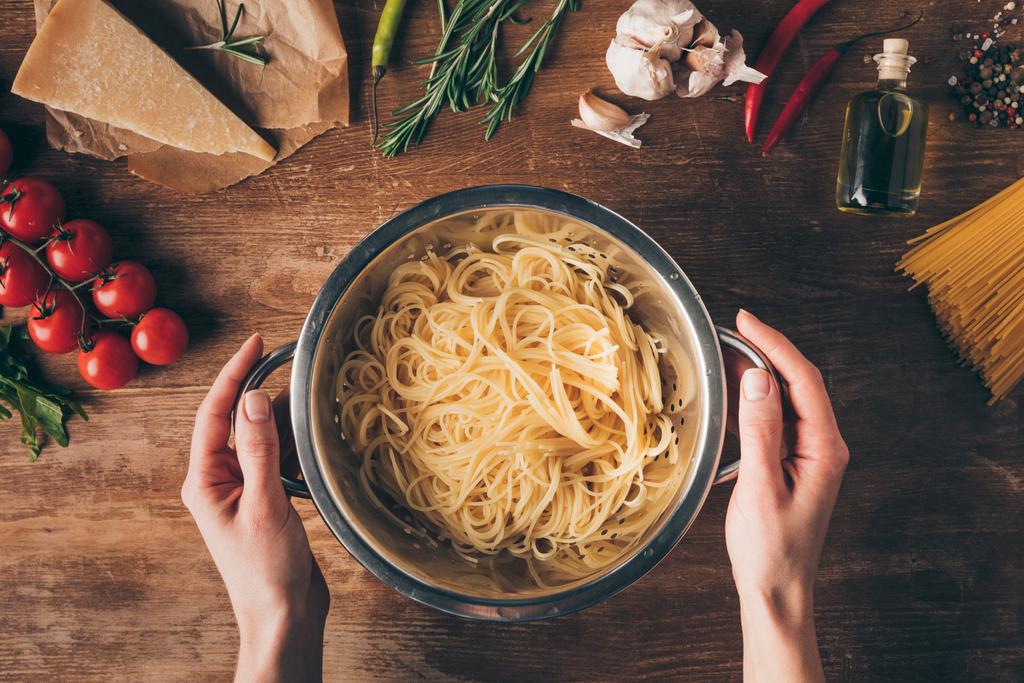Spaghetti or Spaghettini is best known when accompanied by a spicy Bolognese sauce. But the long cords can do much more than that. For example, have you ever tried waffles with the delicious pasta or prepared the pasta in the oven? If not, you should make up for it quickly! We provide you with these and other inspirations for delicious spaghetti dishes here.
Pasta with tomatoes and zucchini
We know pasta with a number of different sauces: Classic and simple are pasta carbonara, spaghettini Aglio e olio (with lots of garlic!), spaghetti alla puttanesca, or simple pasta salad. The noodles are boiled in salted water according to the instructions on the packet and then mixed with the respective sauce. Our first delicious spaghetti creation with Mediterranean vegetables spreads a holiday mood, don’t you think? Fresh thyme and aromatic Parmesan make the enjoyment perfect.
Red mullet fillet on spaghetti

Anyone who only ever serves fish with rice or potatoes is missing out on the best: the tender red mullet fillet and the delicious pasta form a successful combination! The slight kick of spiciness from the chili gives the dish the finishing touch.
Spaghetti with carrots, feta cheese, and sesame
This delicious veggie dish impresses with its contrasts: fruity seasoned carrots and spicy feta cheese form a great taste contrast. The whole thing is perfected with fresh parsley and aromatic sesame. By the way: Instead of feta cheese, you can also use halloumi – it tastes at least as good.
Spaghetti with wild garlic and almond pesto
Pesto is one of the classic pasta sauces – and for good reason: the delicious herb sauce can be varied wonderfully and is quick to make. Why not try this spring-like variant with aromatic wild garlic and crunchy almonds!
Pasta with olives and tomatoes
“Vegan and delicious” – that could be the motto for this dish. The delicacy of spaghetti, olives, tomatoes, and capers is on the table in just 30 minutes.
Spaghetti Shrimp Parcels
These small packages are really something special: because the delicious pasta is tied up with shrimp, tomato sauce, and fresh parsley and prepared in the oven. Practical: This variant is super easy to prepare and then only has to be baked shortly before consumption. With a few extra shrimp, a delicious shrimp salad can be served as a side dish.
Pasta with nut and broccoli sauce
You have to try this delicious pasta with creamy vegetable sauce yourself – it’s definitely worth it! Crunchy nuts and aromatic broccoli complete the quick treat.
Pasta with colorful vegetable sauce
Asparagus, peppers, tomatoes, spring onions, and a slight spiciness from the chili – this pasta clearly stands for healthy enjoyment! If you prefer to enjoy the dish vegan, simply leave out the parmesan.
Spaghetti with meatballs and tomato sauce

Not only do Susi and the Tramp like this spaghetti variant – we also like the spicy meatballs in combination with aromatic tomato sauce and al dente pasta!
Spaghetti waffles with powdered sugar and berry compote
We also have the right spaghetti recipe for those with a sweet tooth: together with eggs, milk, flour, and sugar, the noodles become crispy waffles. Serve with a fruity compote – delicious!











